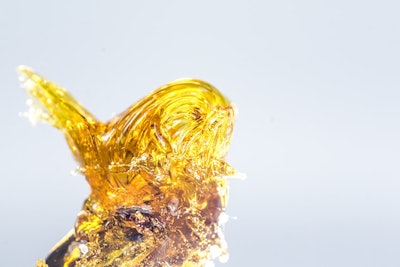
This article originally appeared in the August 2018 print issue of Cannabis Business Times. To subscribe, click here.
The cannabis concentrate industry has advanced at an accelerated rate for the past five years. In fact, more advances to specialized, large-scale equipment and the associated methodologies have occurred in the past five years than all previous years combined, thanks in large part to the influx of funding for research and development.
This unprecedented acceleration has produced a completely different focus on concentrate manufacturing. Like all other agricultural commodities, today’s focus has shifted from simple production to lowering cost of production without compromising quality—i.e., catering to customers’ desires for the best possible product at the most affordable price.
As of late, I’ve been seeing market movement toward wet-plant extraction. This method does not require trimming, drying or curing plant material, which saves money on trimming-labor costs and construction and maintenance of drying environments. And since the terpenes are not evaporated during drying, it yields a final product with the highest monoterpene content. Combine this methodology with large-scale extraction equipment and processes, and you can produce superior products for a superior price. That said, the resulting multitude of concentrate forms have specific and targeted uses, ranging from flavorless distillates for manufacturing edibles to full-flavor, high- cannabinoid content oil for vape cartridges, and everything in between.
The first installment of this extracts series sheds light on different extraction methods and their resulting extracts, and explores the cannabinoid and terpene profiles of each concentrate product and its intended end use.
What’s In?
Today, multiple large-scale extraction methods are available, and more are being developed to facilitate large-scale CBD extraction from hundreds of acres of hemp fields being cultivated in many U.S. states, Canada and Europe, among others. Medium-scale methodologies are being utilized to manufacture most connoisseur-quality and mass-produced consumables in various concentrated forms, but large-scale processing and manufacturing soon will match that quality.
Less than 10 years ago, cultivators had few extraction-equipment options, let alone large-scale extractors or super-refining equipment. Manufacturers were reluctant to sell equipment to or advise anyone in the cannabis industry during prohibition. Realistically, cultivators had five options:
- carbon dioxide, or CO2, extraction (done crudely);
- dry sieve;
- water extraction;
- basic Soxhlet extraction methods; or
- crude cold finger extraction methods.
Today, some of those methods have been scaled and perfected and can produce quality products, and many other equipment manufacturers have emerged. Competition between those manufacturers has accelerated development and innovation, resulting in more diverse apparatuses often borrowed from existing industries that have produced extracts and equipment for decades (e.g., U.S. Patent No. 4,276,315, filed in 1979 to patent a method of decaffeinating coffee). Other equipment manufacturers have expanded the capabilities of their larger equipment and focused on efficiency through automation.
To read the full article in Cannabis Business Times' August 2018 issue, click here.
Top photo courtesy of Adobe Stock


























